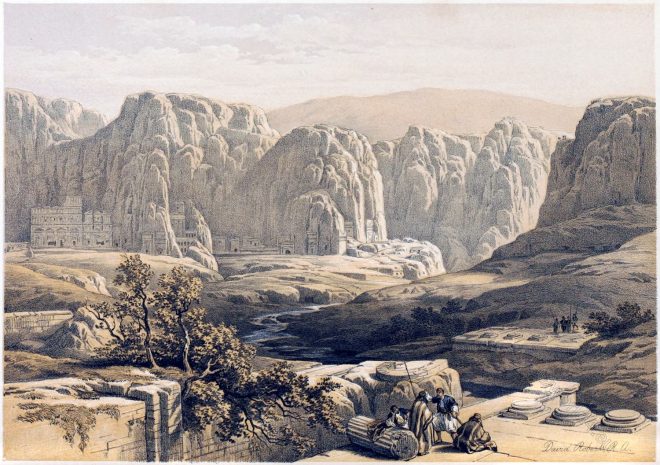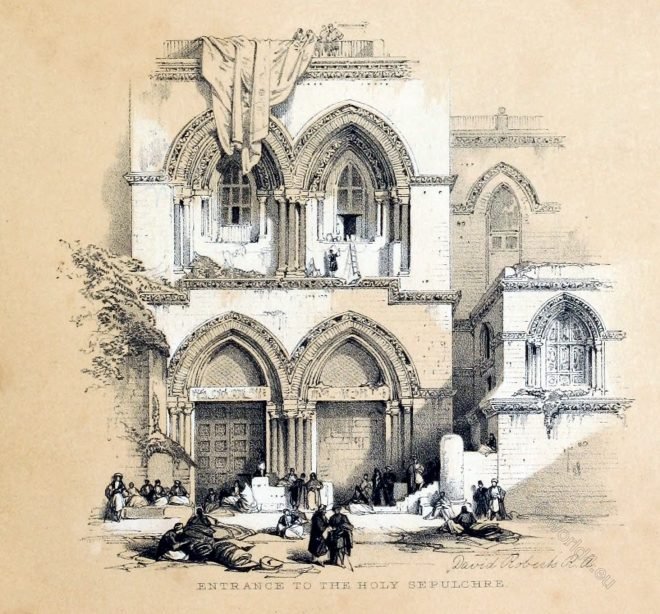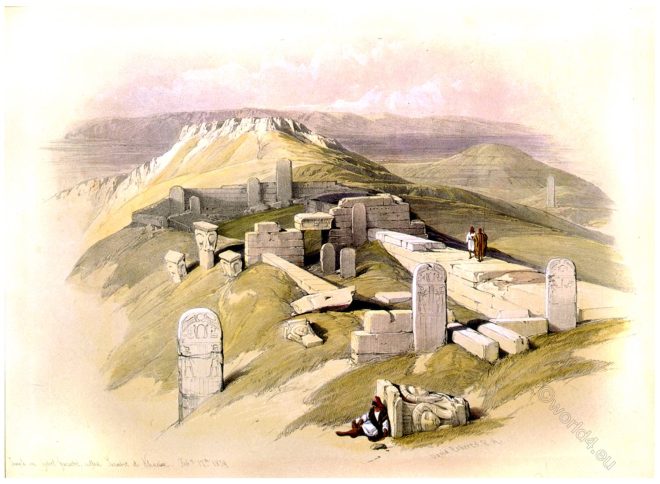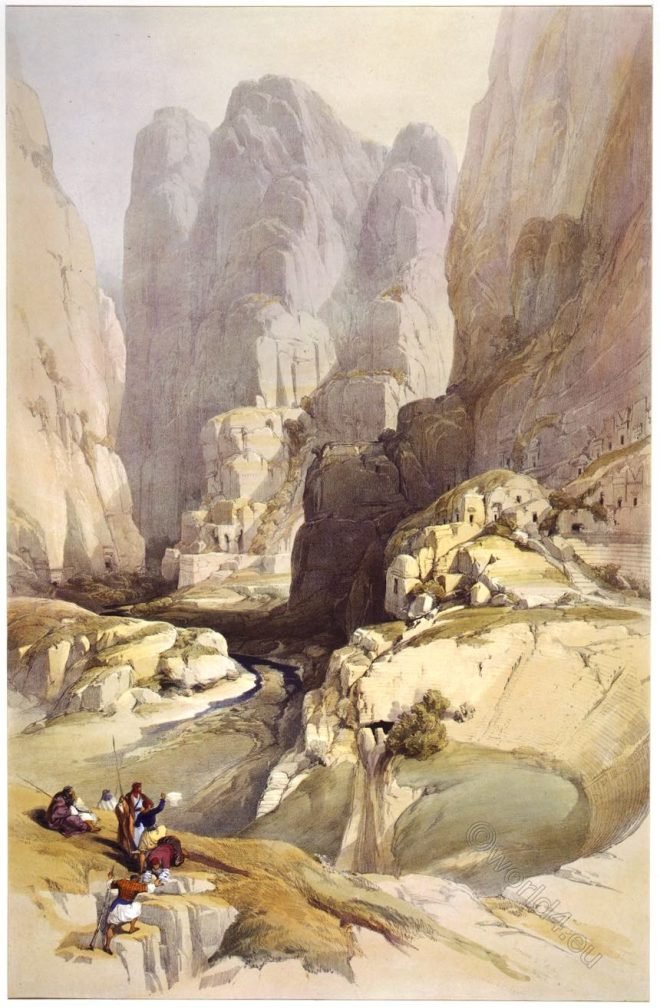The general view of Petra strikes every traveller with admiration. El Deir stands a thousand feet above the level of the City.
Category: Middle East
Descent upon the Valley of Jordan 1839.
The View is taken from the highway leading from Jerusalem through Jericho, and forming a part of the road, by which Jerusalem was connected with the countries on the Euphrates
Baalbek from the Fountain May 7th 1839.
The grandeur of the ruins of Baalbek can best be appreciated by the large drawings in this Work of the eastern portico of the temple
Hunting scene of Sassanian Fabrics of the Middle Ages.
During the reign of the Sassanids, who ruled the Neo-Persian Empire from 250-650 AD and were distinguished by their love of luxury, the arts, especially those of weaving, reached a high level of perfection.
The Gonfanon, or Amorial Ensigns of Jerusalem.
Exhibited in the vignette, were appointed by the chiefs of the first Crusade, after the capture of the city on July 15th, 1099, to be borne by the Christian king then elected.
General representation of the Site of Petra, Jordan.
This Engraving gives a general representation of the area which opens to the spectator on emerging from the “Chasm” by which he enters on the East.
The Entrance to the Church of the Holy Sepulchre at Jerusalem.
This Vignette represents the facade of the Church of the Holy Sepulchre, which is built over the spot where our Lord was presumed to have been buried.
An Ancient Egyptian Temple, on Gebel Garabe. Sinai, Egypt.
A view of the ancient Egyptian Temple of Hathor at Gebel Garabe, usually known as Serabit el-Khadim, in the Sinai, Egypt.
Mount Hor, from the cliffs encircling the ancient city of Petra.
The view was magnificent, commanding El Ghor and the Wady Arabah, while above him towered the naked majesty of Mount Hor.
View of Petra from the top of the Nabataean Theatre.
One which most directly meets the eye on entering the City of Petra from the eastward, is the Theatre.










